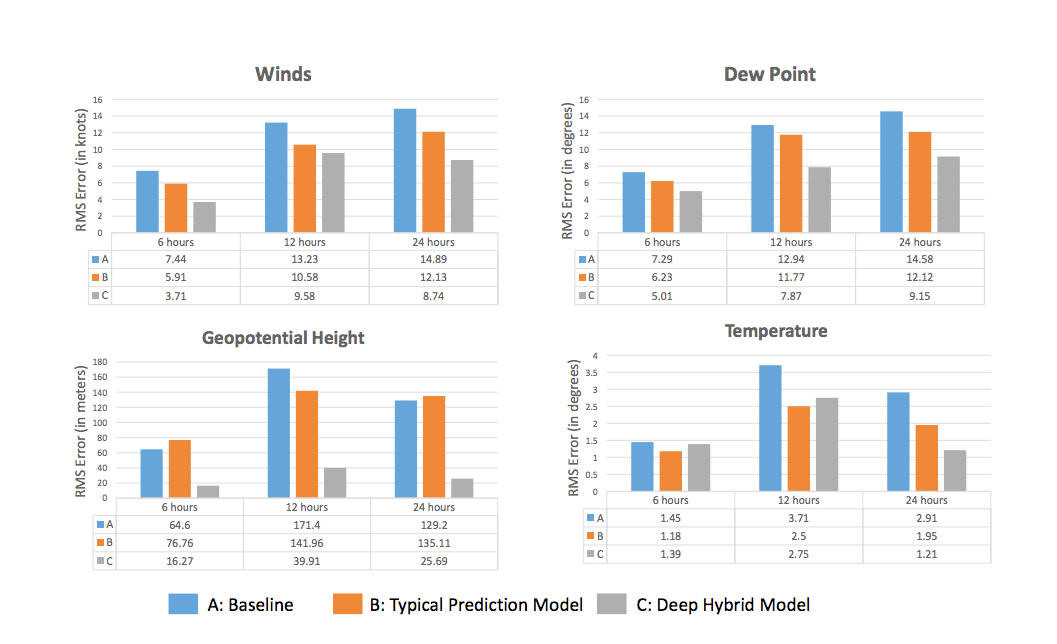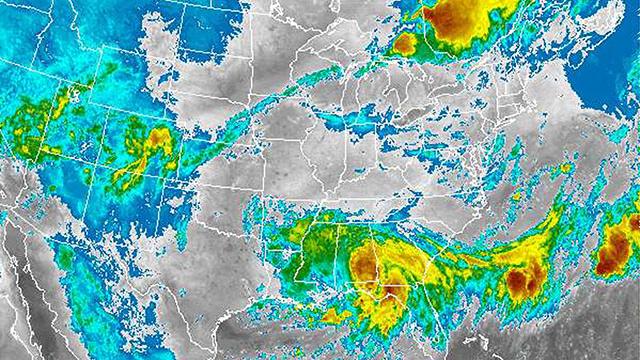Machines can do lots of things better than your average human brain. Hell, a $5 calculator is more gifted at maths than I’ll ever be. And now machines can even predict the weather more accurately than your local bag-of-bones meteorologist.
Microsoft researchers Ashish Kapoor and Eric Horvitz are using machine learning to make more accurate weather predictions over a 24-hour period. So while this robo-brain won’t be able to help you with your five-day forecast, it can more accurately tell you if rain or shine is more likely during the course of your day.
How? By simply not making assumptions. Kapoor and Horvitz’ system can learn from massive data sets of past weather events — because history often has a way of repeating itself, even when it comes to weather. Using this data, Kapoor says we don’t have to make “restrictive assumptions” about Mother Nature. We can just let the data do the talking. Kapoor spoke with Gizmodo over the phone and gave a simple example:
Today in Seattle it’s partly cloudy. There is some kind of pressure profile and temperature profile for Seattle across space and time. So if I have 100 years of history, what I can do is I can look through that history and find the day that matched exactly the weather today. If I find that June 2, 1955, was very similar to today. So consequently I can say the weather tomorrow is going to look June 3, 1955. I haven’t modelled any natural phenomena, but I can leverage the power of data to make predictions that make sense.
Essentially, researchers are now combining physical modelling (aka the old way of predicting weather with maps of incoming systems) with machine learning techniques that analyse how past weather systems behaved. Specifically, they used deep neural networks that’ve already helped improved artificial sight and speech. Their new models have much lower error rates when it comes to predicting wind, dew point, pressure zones locations (geopotential height), and temperature, up to 24 hours out.

RMS stands for root mean square error.
“The deep neural network strives to model the dependencies across variables without making explicit assumptions,” Kapoor says. “You don’t even need to encode that relationship, these models learn that relationship automatically.”
This isn’t the first time Kapoor has used machine learning to help improve our understanding of complex weather systems. By using public FAA data from tens of thousands of commercial aeroplane flights per day — things like planned airspeed, distance, altitude, and observed groundspeed — Kapoor’s machine learning algorithms were able to determine higher altitude wind patterns.
“The machine learning algorithms try to express today as a very complex function of history,” Kapoor says. “Using that function, you try to extrapolate what it’s going to look like in the future.”
We’ve still got a long way to go before robo-meteorologists are on the local news. For one, this is only accurate in a 24-hour window, though Kapoor is currently investigating how that period of accuracy can be extended. The team also believes the system could help scientists better understand the effects of climate change on weather patterns.
Whether Al Roker’s successor has a squishy brain or a silicon chip, this research offers a fascinating look at how machine learning is finding its way into every aspect of our lives — from creating artificial sight to determining if we need an umbrella.
[A Deep Hybrid Model for Weather Forecasting via Microsoft Research]
Top Image via Getty Images Staff
